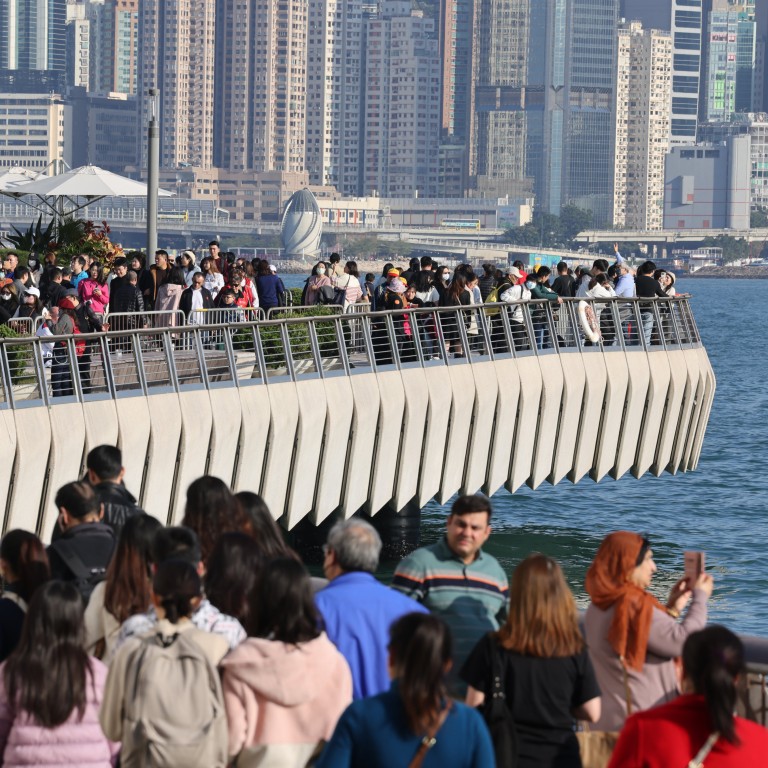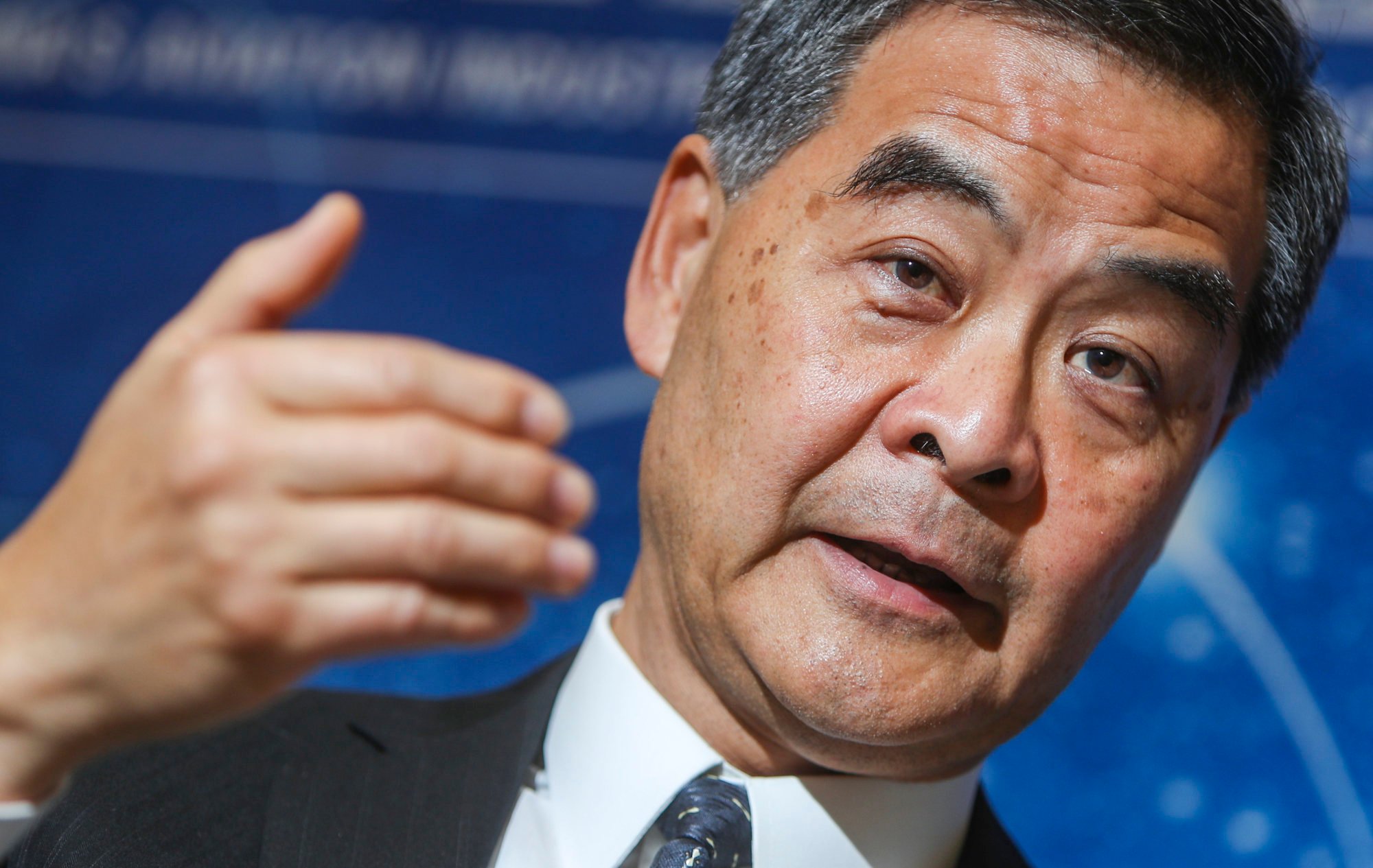
Hong Kong tourism officials too ‘passive’ in efforts to attract mainland Chinese visitors, former city leader CY Leung says
- Ex-leader Leung Chun-ying criticises politicians in social media posts after local businesses expressed concerns over exodus of Hongkongers during Christmas break
- ‘A proactive approach would be to facilitate travellers heading south through policies and procedures,’ he says
Leung, a vice-chairman of the nation’s top political advisory body, criticised Hong Kong politicians, without naming them, in two social media posts on Tuesday and Wednesday after local businesses expressed concerns about a large number of residents leaving the city during the Christmas holidays.
Belt and road charity work easier without government, says Hong Kong’s CY Leung
“Making guesses [about mainland tourists] is passive. A proactive approach would be to facilitate travellers heading south through policies and procedures,” he said in a Facebook post on Tuesday.
“This, in nature, is a tourism policy, and the transport bureau and Immigration Department are just playing a supporting role. So which authority is primarily responsible for scoring goals?
“The role of a striker and a goalkeeper should be clearly defined. The responsibility of scoring goals cannot be handed over to the goalkeeper.”

Secretary for Culture, Sports and Tourism Kevin Yeung Yun-hung is the city’s top tourism official. He served as education undersecretary in Leung’s administration between 2012 and 2017. Yeung was then education secretary until last year.
In 2019, in what the former chief executive described as his “first open criticism of a current official”, Leung accused Yeung of “harbouring evils” over the Education Bureau’s handling of a teacher who made a hate speech against police during the anti-government protests.
Leung renewed his criticism of Yeung in 2020 amid calls for authorities to name teachers disciplined for misconduct.
CY Leung slams education head over teachers’ online comments on protests
The Culture, Sports and Tourism Bureau said in a reply to the Post that it had been actively taking the lead and coordinating with other government agencies in rolling out policies and measures that facilitated development of the tourism sector.
The bureau also said it had been working with provincial and municipal governments on the mainland in joint marketing efforts, including the building of a “tourism brand” to encourage regional and international visitors to make multi-destination trips in the Greater Bay Area.
The Post has also contacted the Chief Executive’s Office for comment.
Hong Kong residents made more than 2 million outbound trips between last Wednesday and Tuesday. Over the same period, 653,990 visitors from the mainland entered the city, including 161,789 on Saturday, marking the highest single-day figure for arrivals from across the border since the National Day holiday in October.
With many Hongkongers flocking to Shenzhen for day trips to enjoy affordable dining and retail options, Leung said mainland officials had made “great efforts” in ensuring their cities had competitive offerings following the Covid-19 pandemic.
“Shenzhen is just one example that is within sight for Hong Kong people,” he said.
Hongkongers make 1.3 million outbound trips in 3 days, beating pre-pandemic era
In a Facebook post on Wednesday, Leung, a vice-chairman of the Chinese People’s Political Consultative Conference, said the city should not worry about losing patrons as a result of more land crossings with Shenzhen being open for 24 hours a day.
More checkpoints operating around the clock was among the goals of a three-year action plan released by the National Development and Reform Commission designed to boost business in the bay area, Beijing’s initiative to integrate Hong Kong, Macau and nine mainland cities into an economic powerhouse.
“I think we will [lose more consumers to Shenzhen] in the short term, but if we don’t embrace competition, we won’t face up to the need to upgrade and transform, let alone extend the reach of Hong Kong’s businesses across the Shenzhen River,” he said.
Leung said facing external competition was what made the mainland’s opening-up policy successful.
Beijing not taking Hong Kong’s current calm for granted: CY Leung
But he said many political elites and opinion leaders in Hong Kong did not visit Shenzhen enough, adding there was a reluctance to build relationships on the mainland.
In a related development, the MTR Corporation on Wednesday said it would strengthen cross-border high-speed rail services from January 10 by increasing daily train frequencies between the West Kowloon terminus and Futian station in Shenzhen to 98 trips from 74 currently.
The last train for some Guangdong destinations will also depart Hong Kong later.
To offer more convenience for cross-border travel by having more land checkpoints operating around the clock, the Security Bureau said on Tuesday that mainland and city authorities would consider adjusting their hours based on demand.
The bureau added that an “innovative clearance model” was being developed to improve efficiency at the border.
Meanwhile, the Airport Authority said passenger traffic at Hong Kong International Airport had returned to 80 per cent of pre-pandemic levels. The operator said the airport was on track for a full recovery by the end of 2024.
On December 23, the airport processed a post-pandemic record of 1,034 flights and 164,000 passengers.

